Forearm strains are unpleasant not only due to the accompanying pain but also because the injury can often be debilitating. Muscle strains are particularly bad for the forearms because we use our lower arms in everyday life to hold objects and perform our work. So injuring them can understandably be a major blow to our plans.
If you or your doctor suspects that you have a strained forearm tendon, then this article will help you to learn more about the common symptoms and methods of diagnosis, the typical recovery times, and the various treatment options.
Related posts: forearm pain from fibromyalgia │pain in your wrist and forearm when gripping
Forearm strain symptoms
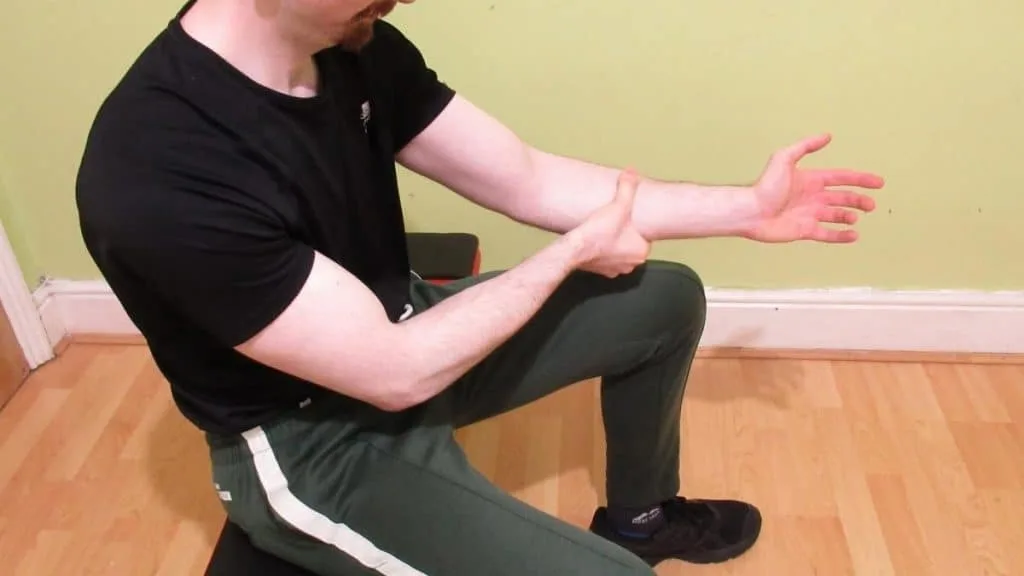
Pain is the first and primary symptom of a forearm muscle strain. Specifically, the pain may intensify when you use your forearms, hands, and fingers to lift things or perform everyday tasks. This is one reason why people often experience typing forearm pain—the forearm muscles insert into the hand and fingers, which are highly active while using the computer.
You might also experience muscle spasms if you have a strained forearm, though there are many other causes of these convulsions—anxiety, caffeine, dehydration—besides a forearm flexor strain or forearm extensor strain.
Additionally, if your strained forearm ligament is injured quite severely, then you might also experience swelling around the affected area. In this case, it’s a good idea to ice the muscle to reduce the swelling (more on this in the forearm strain treatment section).
Finally, it’s not uncommon to have more difficulty moving your fingers and hands if you have a severe muscle strain in or around the forearm. This is because, without the forearm muscles, the hands and fingers couldn’t contract and relax. So, when any of these small muscles get inured, they won’t be able to contribute much (or any) force towards gripping or holding things, hence why you can sometimes struggle to move them when they’re injured.
Forearm strain diagnosis
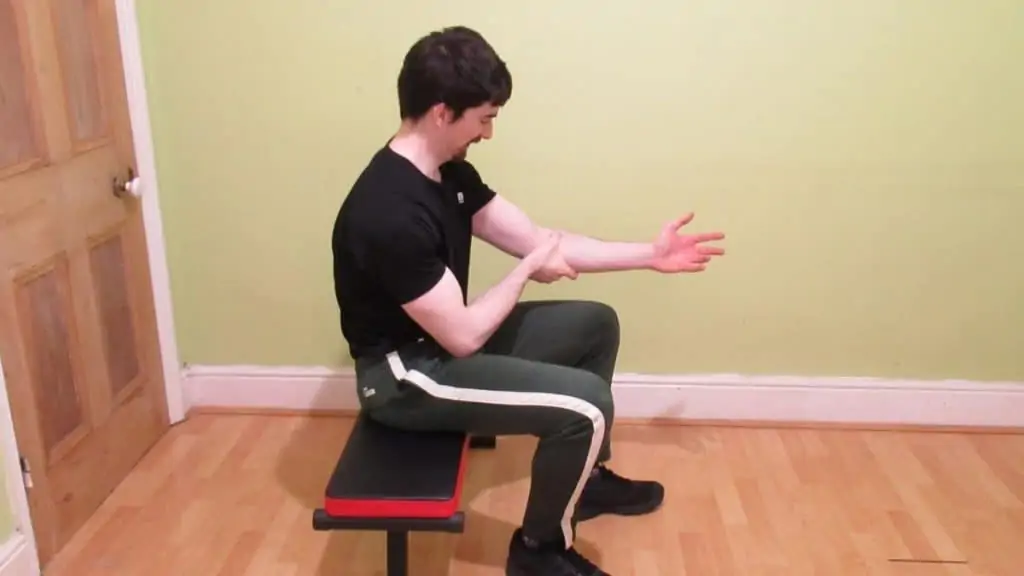
Your doctor will ask when you first felt the pain, how intense the pain feels, and where you specifically feel the discomfort.
To get a better idea of the extent of the forearm muscle strain, your doctor will usually refer you for an MRI scan or an X-ray. This will enable them to see where exactly the injury is originating from, i.e., whether from a tendon, ligament, or from the muscle belly itself.
Forearm strain treatment
Forearm muscle strains can typically heal on their own with a combination of Rest, Ice, Compression, Elevation (RICE), and non-steroidal anti-inflammatory drugs (NSAIDs), which your doctor may prescribe for you.
RICE
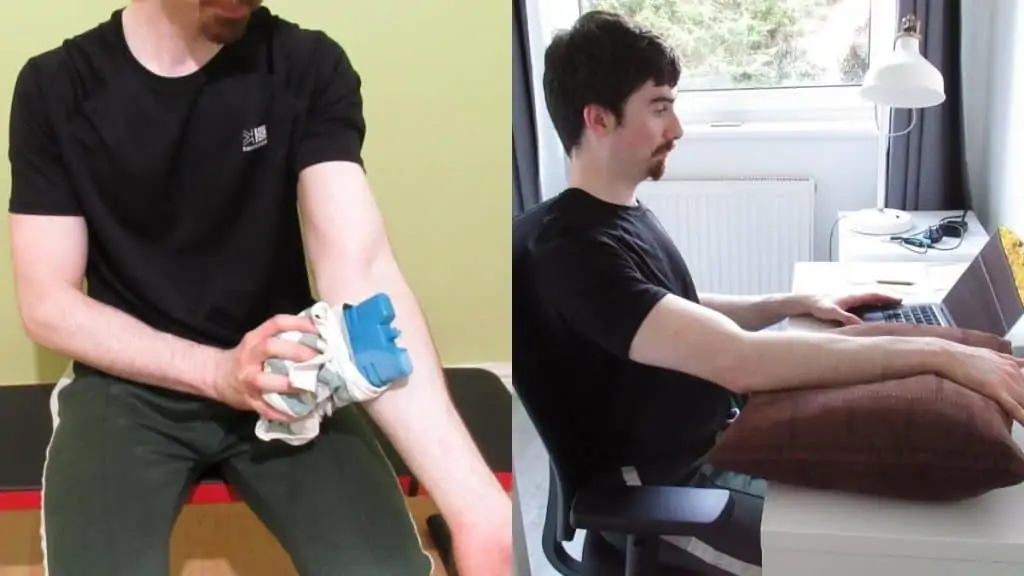
RICE is used to treat a variety of muscle-related injuries such as a strained forearm muscle or forearm cramps and even gaming forearm pain, which is caused by performing repetitive motions without taking adequate breaks.
First and foremost, you should rest the muscle as much as possible. Remember how we learned that many forearm muscles insert into the hand? Well, to speed up your forearm strain healing time, you should limit activities that involve your hands and fingers, such as typing or using a touch screen phone.
Rest is also recommended for similar problems, such as forearm splints from lifting and other activities.
Ice is the second step of the RICE protocol, and you ideally want to ice the affected area 1-2 times each hour, especially if you have swelling. Icing the area can quicken your forearm muscle strain recovery time by reducing inflammation, and it can also help with pain management, especially in the acute phase of the strain. [1]
Compression via a medical bandage can also speed up your forearm flexor strain recovery time by promoting blood flow to the damaged muscle tissue, tendons, and ligaments. Just be careful not to wrap the bandage too tightly. Otherwise, it might have the opposite effect. Ask your doctor if you’re not sure.
Finally, try and keep your forearm elevated. If you have a chair or sofa with arm rests, then this is easy to accomplish. But if you’re at work, then experiment with your desk and chair height to put your lower arm in a comfortable, slightly elevated position, ideally above your heart.
Forearm strain recovery time
The typical forearm strain recovery time is usually about 1-2 weeks if you implement RICE and follow your doctor’s orders. In more severe cases, forearm tendon strain can take 4-6 weeks to heal.
It’s wise to do your best to maximize your recovery in the first two weeks and then talk to your doctor if your forearm strain symptoms don’t diminish or heal completely.
Read more: forearm pain from pull ups │forearm hurts when curling
Forearm strain exercises and rehab
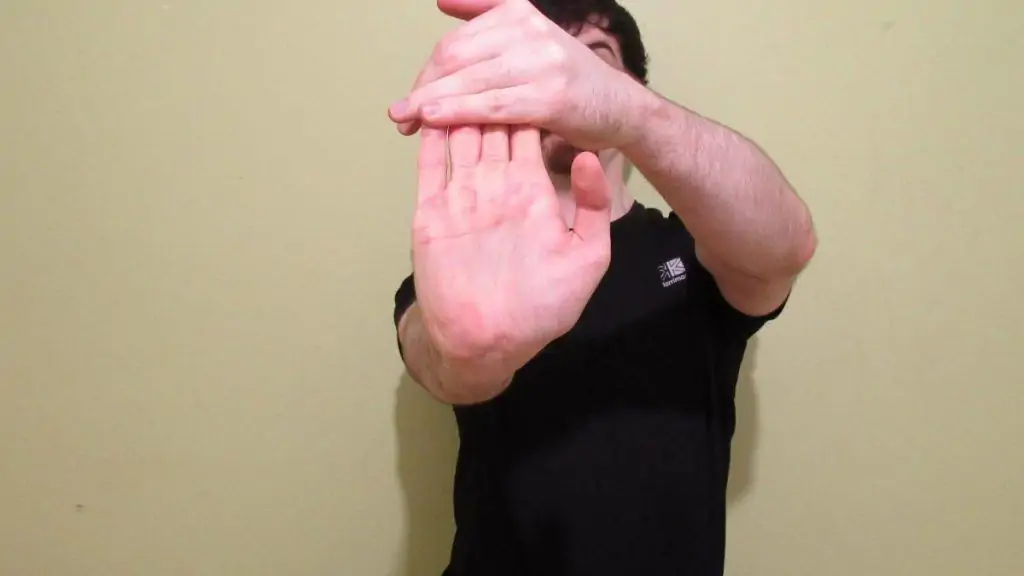
It’s vitally important that you don’t rush into rehabilitation or forearm myofascial release too soon. You might think that those stretches are harmless for a strained forearm, but overstretching or suddenly stretching a muscle under load is actually one of the causes of muscle sprains.
Once you’ve made a full recovery, your physiotherapist will likely suggest some forearm stretch and strengthening exercises, which are useful if your forearm feels tight or weak.
Doing these drills might not be fun, but they will make your muscles more resistant to future injuries by getting them accustomed to handling tension.
An example set of exercises would be the wrist extension and the wrist flexion. (You can also check out these forearm rehab exercises for some more ideas).
Here’s how it works: You take a light dumbbell and then place the underside of your forearm on a flat surface like a table, desk, or weight bench.
From there, you want to bend your wrist and lower the weight towards the floor until you feel a stretch in the top of your forearm. Then, raise the weight back up by extending your wrist. Aim to bring it above where your hand and forearm are level for the best contraction and do 2-3 sets of 10-12 reps in total.
To work the flexors, you simply do the drill in reverse. Rest the top of your forearm on the flat surface, bend your wrist, and then come back up by flexing your wrist. Just be sure to only go down as far as you comfortably can.
Read more: brachioradialis pain after lifting │weightlifting and forearm pain
Conclusion: Treating and preventing forearm strains
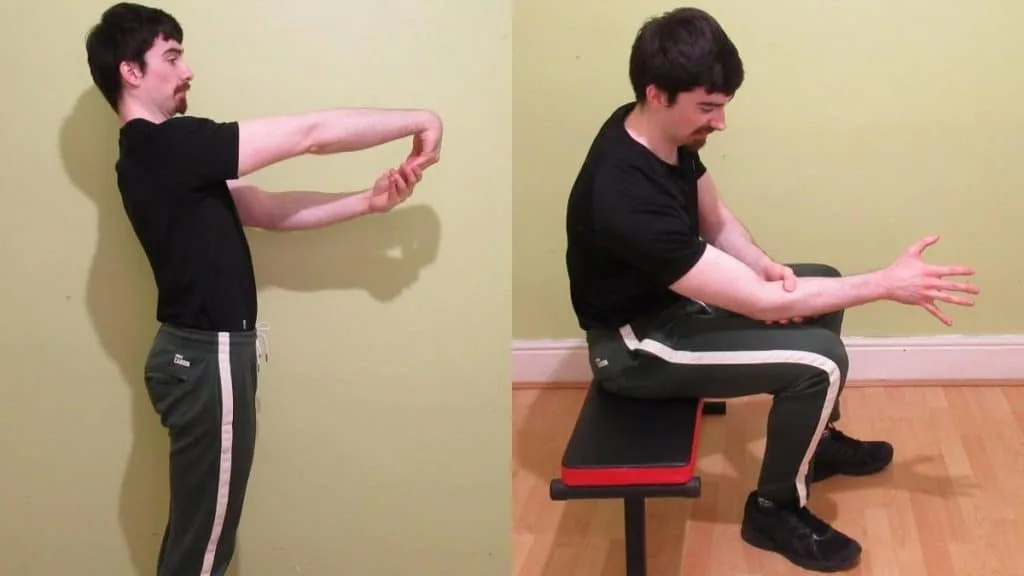
Forearm strains are an uncomfortable injury to have because it’s hard to rest your lower arms in a society that’s filled with typing, DIY work, and other such activities. [2]
The good news is that a forearm muscle strain can often heal in 1-2 weeks. In some cases, this time period can be longer, and that’s just one reason why you should talk to your doctor. Via an MRI scan or X-ray, they’ll be able to tell you more about the location and severity of your injury so that they can help you to recover according to the particularities of your forearm strain.
References
- Pietrangelo, A. (2019, March 8). Muscle Strains. Healthline. https://www.healthline.com/health/strains
- Buchanan, K. A., Maza, M., Pérez-Vázquez, C. E., Yen, T. Y., Kijowski, R., Liu, F., & Radwin, R. G. (2016). Proximal forearm extensor muscle strain is reduced when driving nails using a shock-controlled hammer. Clinical Biomechanics, 38, 22–28. https://doi.org/10.1016/j.clinbiomech.2016.08.004
- UAMS Health. (2017, October 10). What is the RICE method? [Video]. YouTube. https://www.youtube.com/watch?v=63BIQxBgK4c

